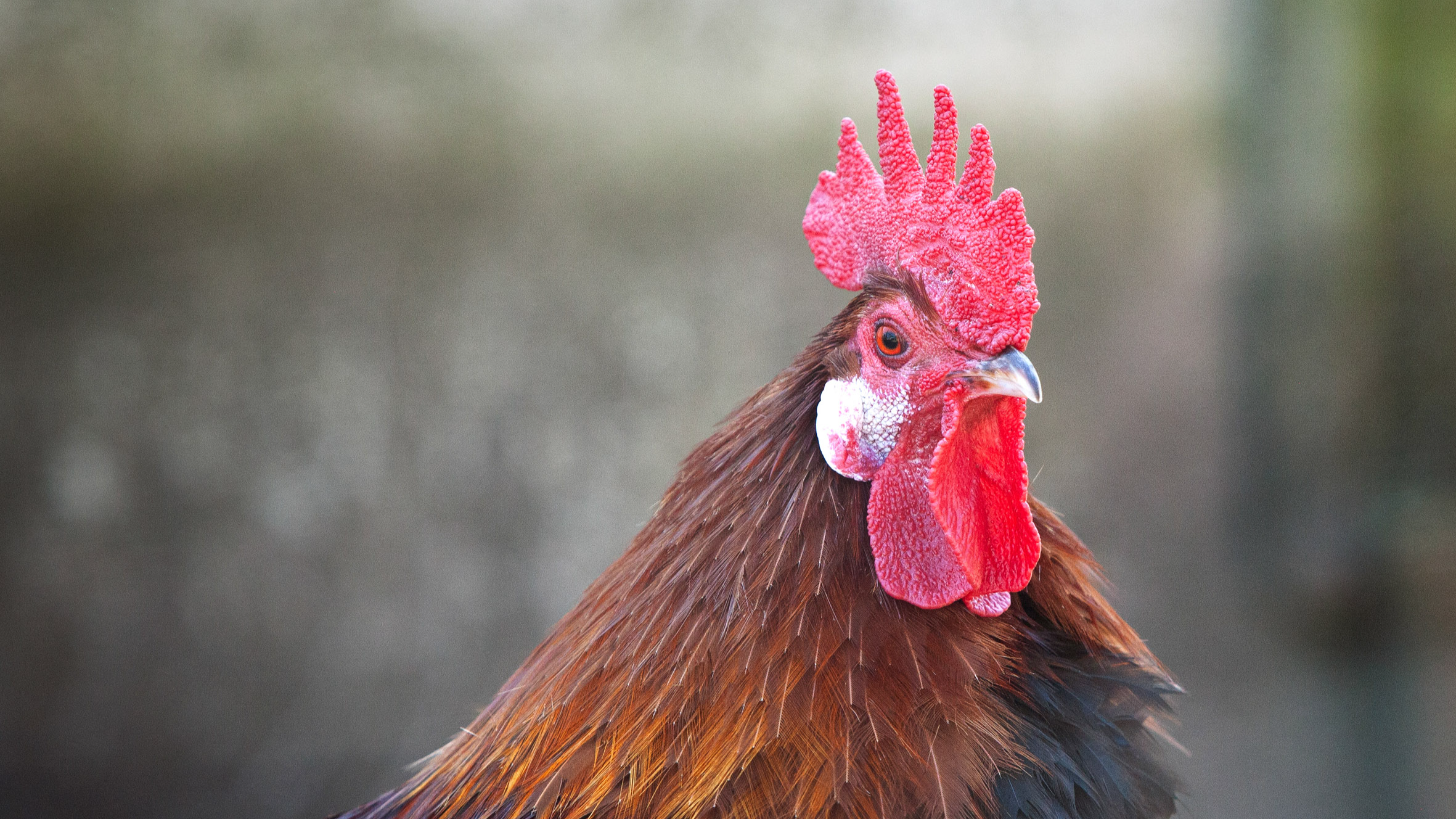
PROJECTS
To participate in and lead different projects is an important part of NordGen’s operations. In close collaboration with public institutions, private companies and other organizations, the overall purpose of all projects is to conserve and promote the sustainable use of genetic resources for Nordic food and agriculture. The funding for the projects is granted by the European Union, the Nordic Council of Ministers, directly from the Nordic countries through its government bodies or from public and private foundations and other organizations. Below is a summary of some of our more high-profile projects that were active in 2024.
Top photo: The Danish native breed Jutland horse, 2024.
See, sow and taste
Where does our food come from? How is it cultivated and which plants can thrive here in our cold climate? In the project “See, Sow and Taste” children and young people learned more about these important issues through hands-on exercises. The project, which was financed by the Nordic Council of Ministers and active during 2023-2024, was a pedagogic and cultural pilot project lead by NordGen in collaboration with other Nordic institutions and actors in Lithuania.
The project started 2023 with a collaboration with The Botanic Garden and The Nordic House in Reykjavík. During the spring, NordGen developed education material that was distributed along with seeds and cultivation material to pre-schools, schools and after-school clubs in Reykjavík. The education material consists of instructions and background material to four different cultivation experiments that can be performed using seeds provided by NordGen. 1188 Icelandic children participated in the project during the first year.
During 2024, the project continued in Iceland (878 children participated) and expanded to the Faroe Islands (about 800 children) and Lithuania (about 1760 children). As part of the project, staff from NordGen participated in several well attended workshops for children on cultivation and food that were held in April 2024 at The Nordic House Faroe Islands. In September the same year, NordGen staff participted in two harvest festivales for children to inform about the project and the origin of food.

Workshop in the Faroe Islands, 2024.
Crop wild relatives
Crop wild relatives (CWR) are wild plant species that are closely related to crops. They are of great importance since traits in these wild species can be transferred to crops by traditional plant breeding approaches. In many cases, wild species have traits that are not present in modern crops, for example pest and disease resistance, tolerance to drought, waterlogging or heat stress. Such traits are very important when adapting crops to future climate conditions and diseases and are therefore central for climate change adaptation and future food security.
The Nordic network on CWR was initiated in 2015 with the long-term aim to promote a well-functioning, climate- and environmentally friendly Nordic agriculture by strengthening CWR conservation and facilitating use of CWR. The third phase of the project was initiated in 2020 with funding from NKJ (The Nordic Joint Committee for Agricultural and Food Research). Funding was granted from the Nordic Committee of Senior Officials for the Environment and Climate in December, which made it possible to expand the Nordic work on CWR during 2021-2024.
During 2024, several project activities were carried out with the goal to strengthen in situ and ex situ conservation of CWR and facilitate sustainable use. For example, seeds collected in Denmark, Finland, Iceland, Norway and Sweden were processed for long-term ex situ conservation at NordGen. To better understand the impact of climate change on Nordic CWR, climate modelling was used to evaluate future geographic distributions under different climate scenarios. The distribution of genetic diversity was studied in selected CWR across the Nordic region using molecular markers.
In addition, several approaches were used to communicate about CWR and project outputs. The outdoor exhibitions continued in Denmark, Norway and Sweden and plant portraits and short films were also published on the Nordic CWR webpage. During the year, inventory reports from Denmark (Mols, Stråsø, Husby and Kattrup), Norway (Færder National Park) and Åland (Nåtö Nature Reserve) and an inventory on Nordic wild food plants were published and made publicly available, and two manuscripts on CWR were submitted to scientific magazines. About 230 persons participated in the CWR lunch webinar series (six epispodes) that took place during October to December 2024 to raise awareness of the project and its various activities and outputs.

Seeds of European dewberry (Rubus caesius) studied in NordGen's seed laboratory.
NordFrost
In case of extreme events, entire animal populations can be wiped out, since farm animal and fish genetic resources are most often small and locally adapted populations. The native breeds show large adaptation potential and may become crucial for increased resilience of Nordic agriculture. Cryoconservation of farm animal genetic resources is a crucial tool for the success in management and conservation of genetic diversity in small native farm animal populations for the future, because it offers an additional layer of security against extreme events and genetic bottlenecks.
The network project titled “Nordic animal gene banks – added value through Nordic cooperation” (NordFrost), aimed to strengthen the collaboration and competence for ex situ conservation of animal genetic resources (AnGR) in the Nordic region. This project was launched as a case study following the Horizon2020 funded IMAGE project (2016-2020) where it was concluded that there is a broad variation in the current state of practices and the distribution of responsibilities related to cryoconservation activities between the Nordic countries. The national strategies on conserving AnGR emphasise ex situ conservation in varying degrees. However, collection of samples, metadata, back-up storage of material or common strategies and action plans for ex situ conservation on a regional level does not exist. This makes conservation of AnGR an exposed area that threatens the resilience of Nordic food security. By developing new collaborative models, strengthening Nordic infrastructure, and enhancing the development of Nordic strategies for ex situ conservation in the region, this network aimed to contribute to increased sustainability for populations and future Nordic food security.
Within the NordFrost project, stakeholders worked together to identify and compare both old and new practices for cryoconservation, and to evaluate the current situation of live- and cryoconservation efforts in the Nordics. Important collaboration networks were formed between the Nordic stakeholders and gene banking scientists and agencies from other European countries and the U.S., which strengthened knowledge-sharing of best practices, and NordGen’s ability to provide guidelines that will help increase the resilience of Nordic agriculture.
The project report for the NordFrost project, “The NordFrost Project Report – Farm Animal Gene Banks in the Nordic Region: Added Value Through Nordic Cooperation”, was published on September 17th. The report lists details about the project background, the project activities and their important outcomes.

Workshop in cryo conservation workshop, Ås, 2023.
Mapping of Nordic protein crops
The project "Next generation genebanking – Unlocking the potential of plant genetic resources in the sequencing era" was granted by Novo Nordisk Foundation and started in 2024. In this collaborative project, NordGen and Aarhus University will map the Nordic seed collection of protein crops. The project will lead to a substantial lift for the genebank collection since researchers and plant breeders will get access to brand new information about NordGen’s seeds – information which is vital for developing future plant-based protein sources.
The project focuses on 4500 protein crop accessions from the Nordic seed collection, such as peas, beans, lentils, and clover, that will be genotyped and phenotyped. Further, a number of so called core collection will be established. Core collections are a smaller number of seed samples that can represent a large part of the genetic diversity for each species. The project partners will create an entirely new genebank infrastructure enabling researchers to easier and faster find the genes that code for certain traits in the plant. The project, which will run from 2024-2026, also involves sharing all the gathered information under open access.
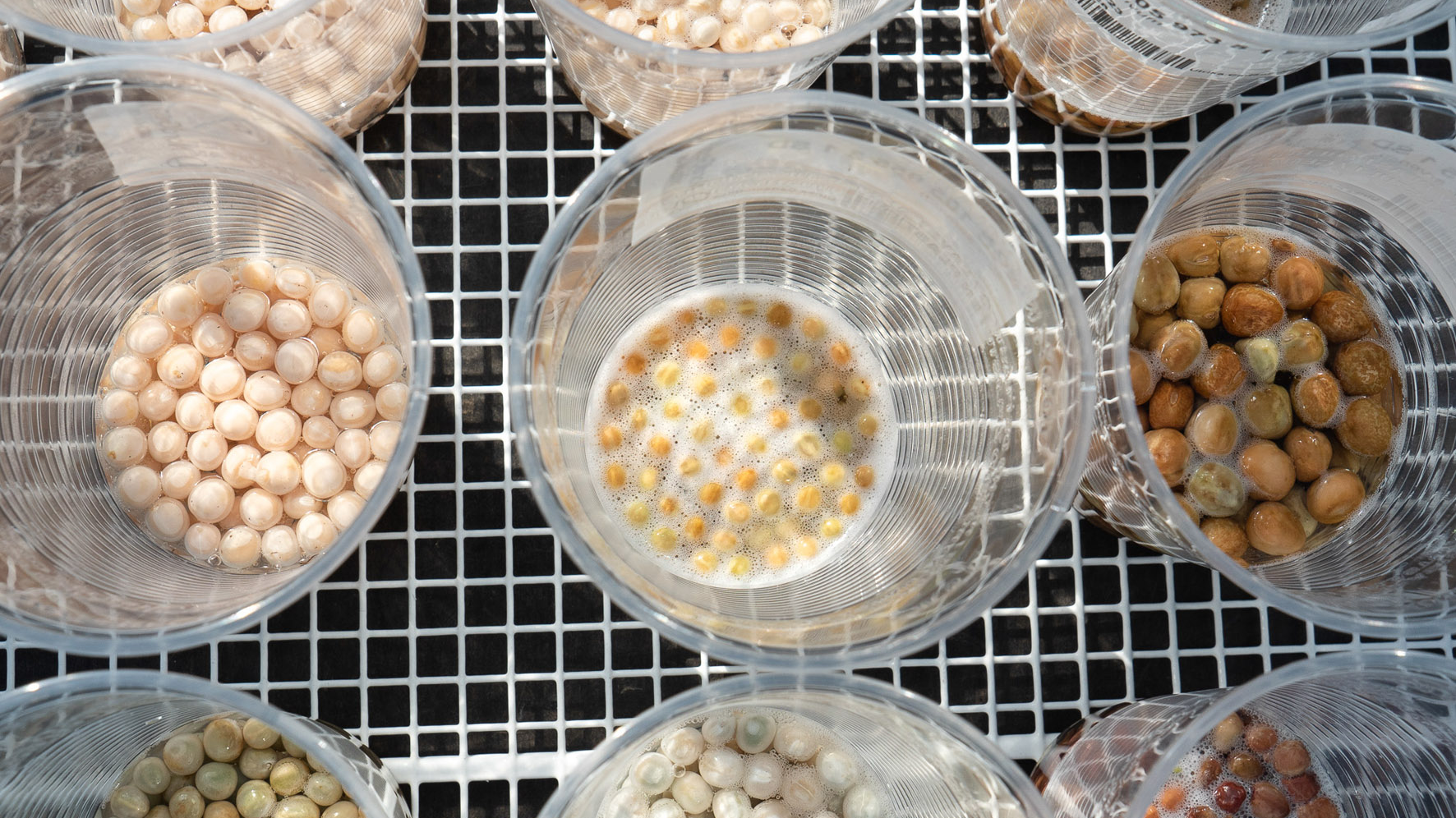
Seed samples of peas from the Nordic seed collection.
NaNo horse
Genomic Characterization as a Tool Towards Sustainable Breeding of the native Nordic Horse Breeds" (NaNo horse) aims to fill in knowledge gaps by characterizing the standing genetic diversity and relatedness within breeds, and unique variation between the breeds. This information can be utilized by breed associations to make well informed conservation and breeding plans.
The aim of the project is to characterize genomic diversity and inbreeding, within and between Nordic native horse breeds. There are broad knowledge gaps regarding our native breeds, and the true status of their genetic diversity and relatedness. This is an essential first step in describing standing genetic variation within breeds to be preserved, and unique variation between breeds. It can further provide knowledge about genomic regions with unique characteristics and diversity. This information can be utilized by breed associations to make well informed conservation and breeding plans.
The project began in 2022, and 2024 was the final year of the project. During 2024, the project advanced according to the research plan: A Master student from the University of Copenhagen finished her Master thesis on Faroese horse with data from the project. The project group had a physical meeting at Skåbu in Norway in collaboration with another horse project. The project also had an online webinar for horse owners and breeders on October 25th with over 300 people registered to participate. The DNA sequence analyses continued, and the project group were working on 3 manuscripts with results from the project. These manuscripts will be finalised and published in 2025.
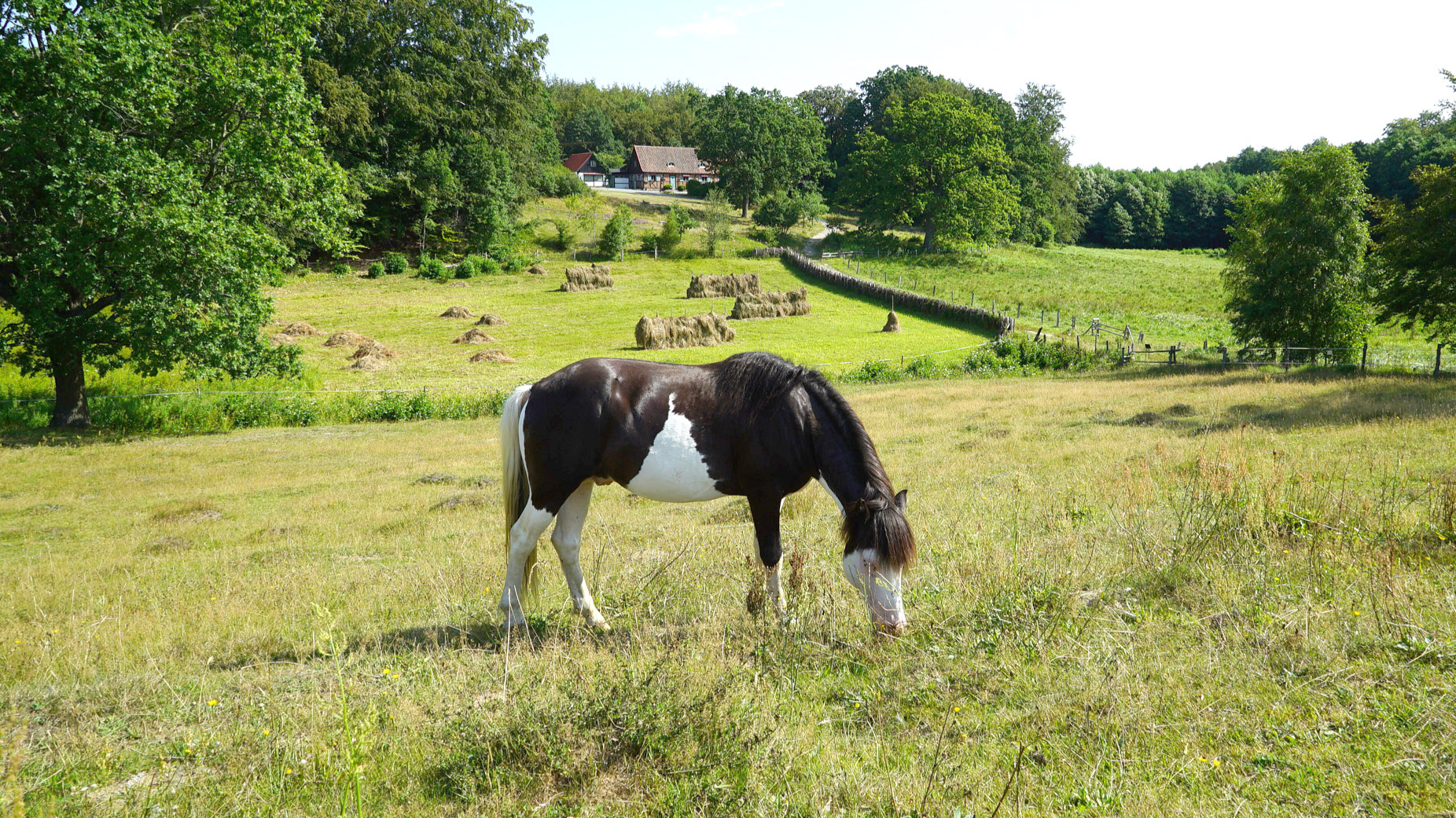
Gotland Russ in southern Sweden.
Nordic oat collaboration
In 2022, 764 different accessions (seed samples) of oats from NordGen were sown in the field, among other things to study the plants’ cultivation traits. During the year, a project was developed to genotype all the accessions (i.e. genetic characteristics of the plant individual investigated through DNA analyses). NordGen, Oatly, Lantmännen and ScanOats share equally the costs of the DNA analyzes which are being conducted by bioinformaticians at ScanOats. Genotype data was analyzed in 2024 by ScanOats and a publication will be written under 2025 describing the NordGen oat collection in 2025. One result from the bioinformatics analysis is the creation of an oatCORE collection of NordGen Oat (oatCORE150). The oatCORE150 is used in the PPP RobOat project.
NordGen and Oatly have also carried out characterization based on phenotype (physical characteristics such as straw height, grain color, panicle shape and tendency for shattering). The effort required many hours of work in the field, a job that demonstrated the genetic diversity among the 800 oat varieties. The new data will result in much more knowledge about the collection and provide information on the genetic relationship between all the samples. Because of this, it will be easier for researchers and plant breeders to be able to choose exactly the varieties they have a use for in the future. A better described genebank collection thus becomes more useful for those actors who are interested in developing new oat varieties that are more nutritious, more profitable or better adapted to a changing climate.
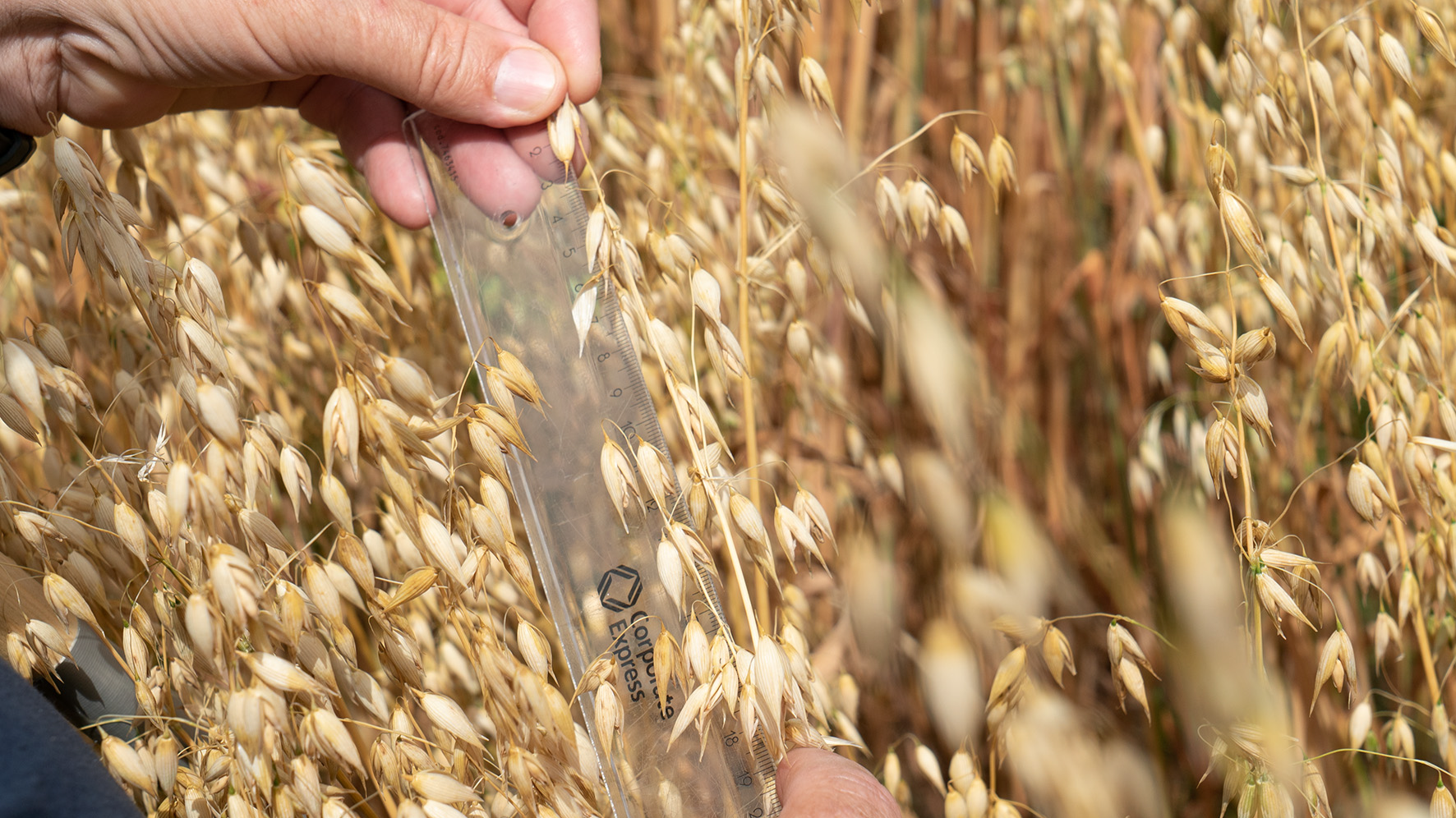
Securing and developing Ukraine’s genebank
Only a few weeks after Russia’s invasion of Ukraine, it was clear that there was an imminent risk of damage to the national genebank’s seed collection located in Charkiv. Along with other European institutions and support from the Novo Nordisk Foundation, NordGen coordinated emergency support to genebank already in the spring of 2022. After the initial phase, a major project coordinated by the United Nation’s Food and Agriculture Organization (FAO) helped the Ukrainian genebank to duplicate and move about the seed collection, from Kharkiv to the west of Ukraine.
In the end of 2023, NordGen welcomed a group of Ukrainian genebank colleagues to the headoffice in Alnarp, Sweden, to attend training sessions in data management systems and seed laboratory work. This visit is part of a long-term plan for securing and developing Ukraine’s genebank and its invaluable seed collection. In Alnarp, the Ukrainians, for example, received intensive training in GRIN Global, the data system NordGen and many other genebanks are using to store information about their seed collections. Another part of the longterm plan is to send a second backup of the seeds to Svalbard Global Seed Vault. In April 2024, NordGen hosted a meeting that included international experts and representatives from the Ukrainian genebank. The main goal of this meeting was to develop a strategy for resource mobilization and development of the Ukrainian genebank system in a short and longterm perspective.
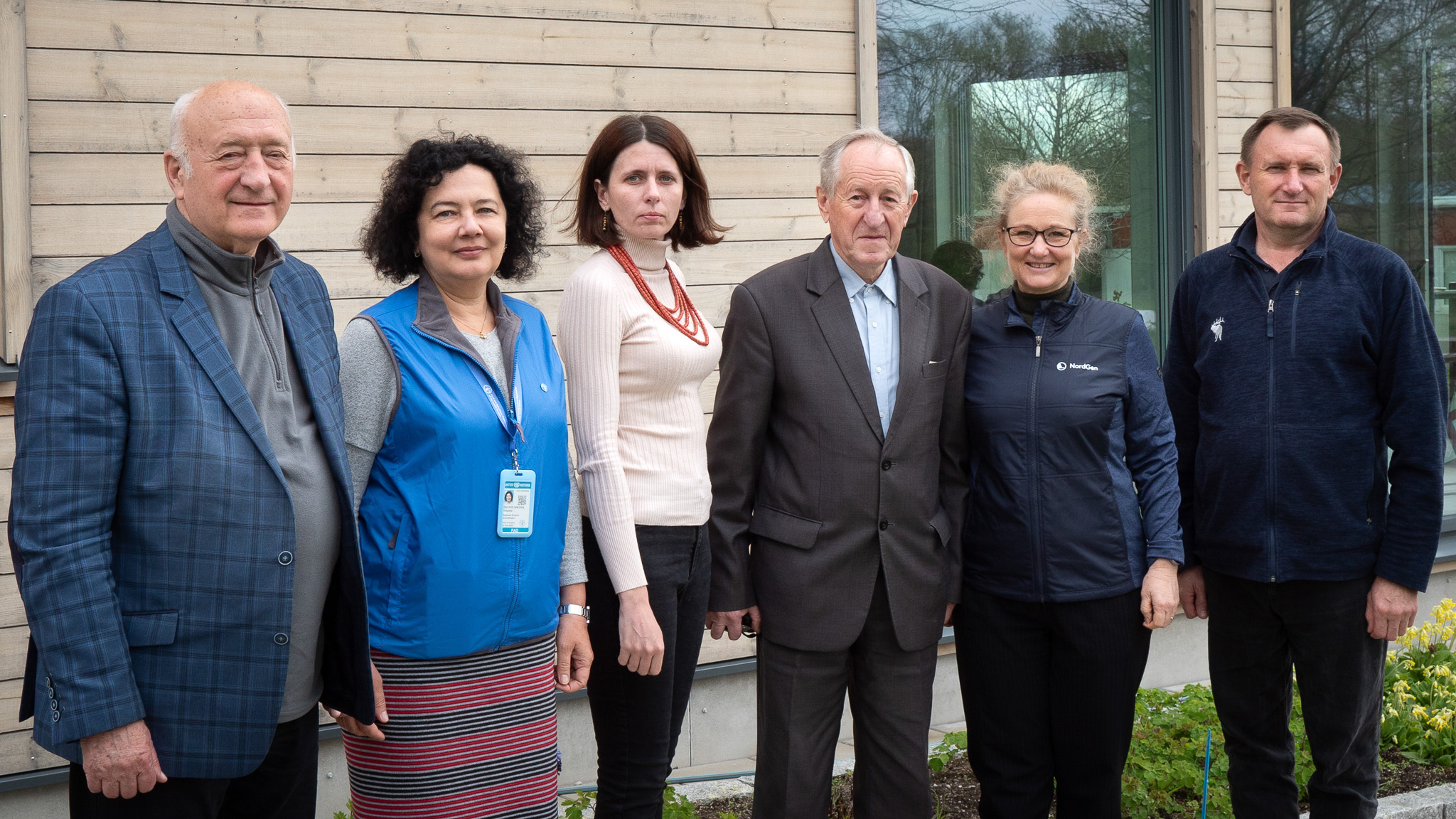
NordGen's Executive Director, Lise Lykke Steffensen, with the Ukrainian guests.
PRO–GRACE
Europe has more than 2 million plant genetic accessions conserved ex situ in 410 institutes and associated countries. Even more diversity is found in situ in European farmlands and wild habitats, where it contributes significantly to agricultural resilience and climate mitigation. However, the European PGR system is far from perfect. Information on genebank accessions is, at best, fragmentary, while for in situ accessions it is almost non-existent. Many genebanks and other collections lack appropriate resources, capacities, infrastructure and quality controls and in situ/on-farm activities have received short-term and fragmentary support.
As a result of these and other challenges, many genebanks are currently unable to provide to their customers (scientists, breeders, farmers) the services needed in terms of access to the breadth of PGR diversity and associated information and all European countries lack integrated in situ/on-farm activities.
The PRO-GRACE (Promoting a Plant Genetic Resource Community for Europe) project aims to fill these gaps by laying the foundations for a European Research Infrastructure dedicated to the conservation, management and study of European plant genetic resources. The project began in 2023 and in addition to NordGen, the project inludes 31 (mainly European) project partners.

Nordic flax cultivation
Flax is a crop with many uses that is suitable for cultivation in the Nordic Region. But today, the cultivation in the Nordic countries is limited, especially for fiber production. In 2023, a collaborative project on Nordic flax began that was initiated by NordGen’s working group for industrial crops. The project “Evaluation and characterization of NordGen’s Nordic flax accessions to increase knowledge and facilitate use” is led by NordGen and includes the following project partners: Skånelin, the project "1 KVM LIN" and Science Park Borås. The aim of the project is to evaluate and characterize NordGen’s 27 active core accessions of Nordic flax (and three additional flax accessions obtained by the project partner Skånelin), determine the accession type (fiber or oil), and in cooperation with stakeholders, find the best accessions for fiber production with potential to be used by the fiber-flax growers in Norden.
Of these 30 accessions, 15 accessions were assessed as suitable for fiber production. During 2024, this selection was cultivated on a larger scale, 10 m2 per variety, to assess the fiber quality to determine which varieties are best for use in fiber production. In 2024, NordGen also initiated another flax project in which a total of 436 different seed samples were cultivated to document morphological characteristics (plant height, flower color, flower size, seed size, etc) and determine whether they belong to the type for oil or fiber production. NordGen’s entire flax collection of 362 seed samples was included in this cultivation. An additional 74 seed samples of Nordic origin, repatriated from genebanks in Poland, the Netherlands, and the Czech Republic, were also included. The traits of the repatriated seed samples will be compared with those of the flax varieties in NordGen’s collection that share the same names. If the characteristics differ, the samples will be included in the Nordic seed collection.
However, the entire collection (436 seed samples) will be genotyped under another project to trace the historical development of flax varieties in the Nordic region, identify rare or unique genetic traits, and guide future breeding programs to enhance the resilience and productivity of flax in a changing climate.
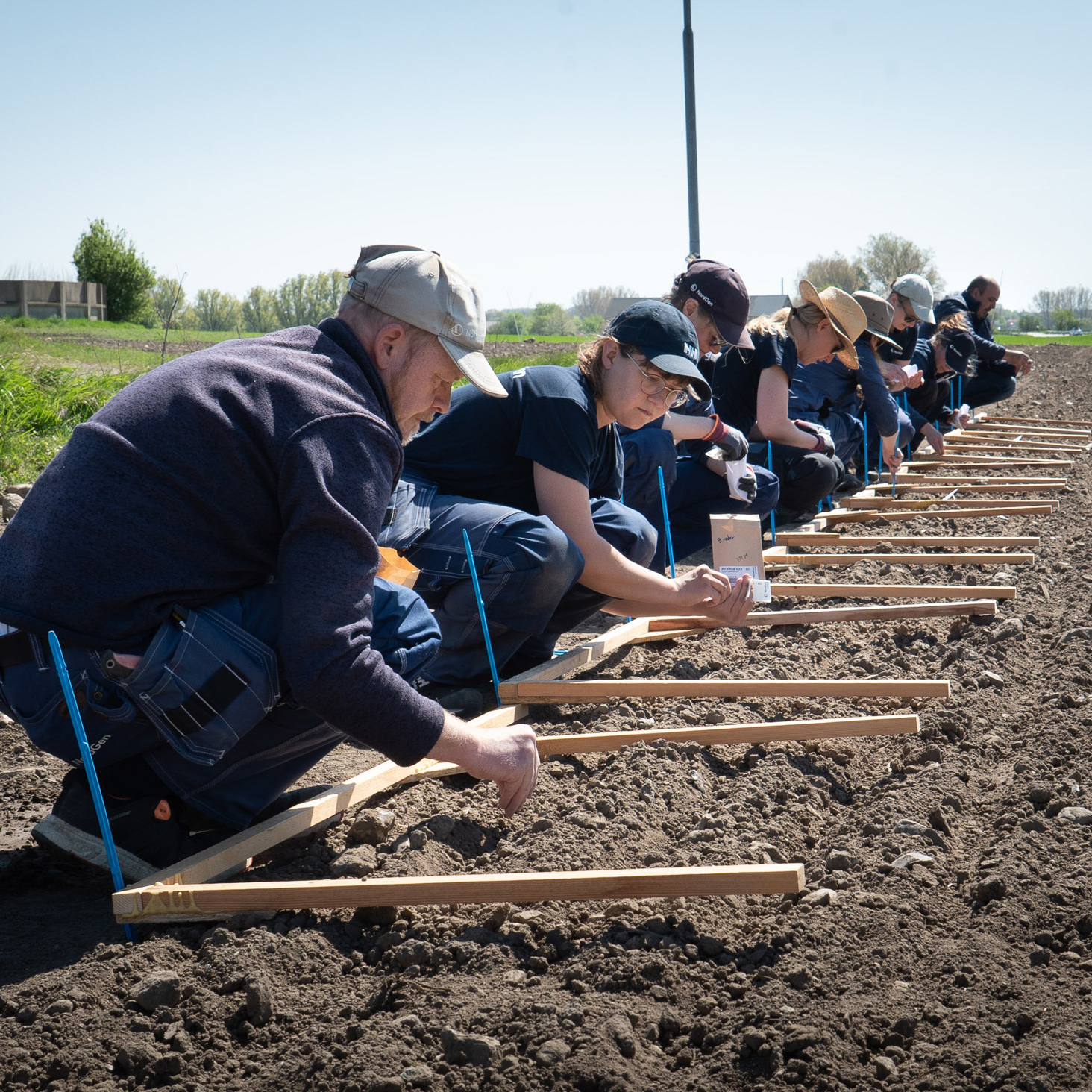
In May 2024, the 436 flax accessions were sown by hand.
Nordic horse project “Hästnäring i Norden”
The role of Nordic horses has been pivotal and ever evolving, influenced by various social challenges. These challenges have significantly impacted the horse industry, particularly the use of native breeds. Despite collaboration among the Nordic countries within the horse sector, there has been a notable gap in integrated data regarding the state of the sector across Nordics. The report generated by this project is, to our best knowledge, the first compilation of data from all the Nordic countries on the horse sector and aims to outline the existing gaps in the genetic resource's viewpoint.
NordGen led the information gathering for the “Breeding and genetic resources" segment with the aim of mapping the horse sector from the genetic resources standpoint. This initiative focused on collection critical data such as the total horse populations, breed demographics, intended uses of various breeds, and identifying key stakeholders. As a result, we published a comprehensive review “Equines in the Nordics” on June 28, 2024, providing valuable insight into the status of Nordic native horse breed conservation and sustainable development.

Quality assessment of gene-banked rooster semen
“Quality assessment of gene-banked rooster semen” or shorter “Rooster semen project ” is an ongoing pilot project that started in 2024, and will end in 2025, and is a collaborative project between NordGen, NIBIO and the Norwegian University of Life Sciences (NMBU). The project aims to identify ways to improve the fertility success of frozen semen collected by roosters.
At present, the main method for conserving chickens in through live gene banking, which leaves this species particularly vulnerable to external threats such as disease. Previous projects have aimed to start cryoconservation for the species as well, collected and froze semen from the Norwegian gene bank for chickens. Unfortunately, the fertilisation rate after thawing was poor. In this pilot project, the remaining frozen semen from these roosters will be tested to unveil possible reasons for the poor fertility rate after thawing.
